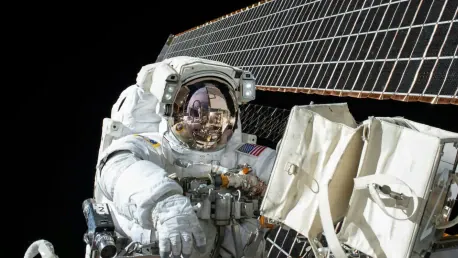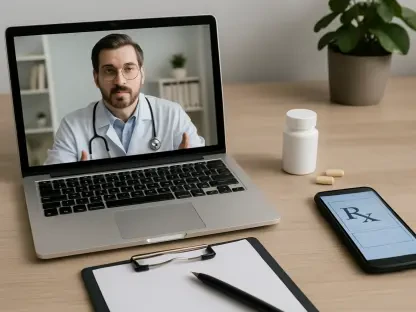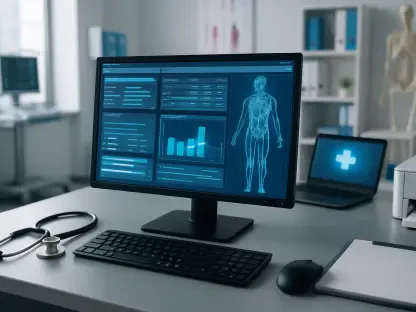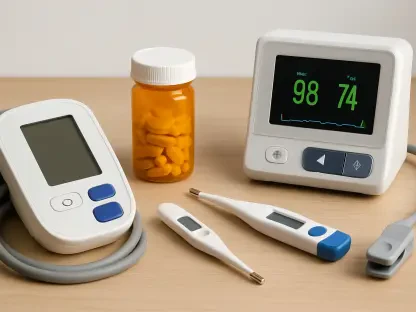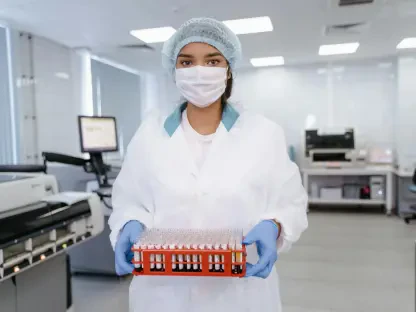The collaborative efforts between NASA and German medical technology developer Corscience to advance astronaut safety underscore the critical nature of readying spacesuits for lunar missions. This partnership commenced in spring 2024, aiming to address pivotal concerns related to CO₂ washout performance, helmet noise reduction, and ventilation flow modification in preparation for the Artemis missions. Utilizing Corscience’s CAP201 capnography module—originally designed for emergency, clinical, and MRI applications—the collaboration leverages its impeccable reliability, a key feature necessary for the rigorous demands of space exploration. Modifications to the hardware and software have been tailored to meet NASA’s specific operational pressures and flow rates, accommodating a communication adapter and ensuring compatibility within the confines of the spacesuit.
Technological Advancements and Customizations
Corscience’s technical expertise plays a significant role in aligning the capnography module with NASA’s specific needs to ensure astronaut safety in the demanding environment of space. The adaptation process involves adjusting the operational pressure ranges and flow rates to match the conditions astronauts will face. Additionally, integrating a communication adapter into the system allows for seamless interfacing with the spacecraft and mission control, facilitating real-time monitoring of astronauts’ vital parameters. The design of a compatible housing ensures the module fits securely within the spacesuit, maintaining functionality without compromising comfort or safety.
The ability to modify existing technology for space applications demonstrates the innovativeness and flexibility inherent in this collaboration. Such advancements are crucial as they directly impact how effectively astronauts can perform their missions while maintaining health and safety. As these customizations progress, they not only meet anticipated deadlines but surpass expectations, showcasing the dedication and meticulous attention to detail from both organizations.
Contributions and Recognition
Dr. Jörg Pintaske, Managing Director of Corscience, expressed pride in their contribution to space exploration safety. His sentiments echo the confidence placed in Corscience’s high-quality solutions by NASA. The positive feedback from NASA’s technical lead further substantiates the efficacy of Corscience’s modifications, emphasizing their proactive approach in addressing critical safety issues. This recognition underscores the collaboration as a sterling example of melding advanced medical technology with space exploration requirements, ensuring spacesuit enhancements cater precisely to astronauts’ needs.
With the equipment expected to support astronauts on Artemis missions in 2026 and 2027, significant development work on new spacesuits remains a priority. These advancements ensure that astronauts are well-prepared for upcoming lunar missions, fostering a safe and efficient environment for scientific discovery and explorative activities. Corscience’s expertise, rooted in defibrillation, monitoring, and critical care technologies, plays a critical role in this process, emphasizing the importance of customizable solutions and the swift commercialization of safer medical products.
Future Implications and Industry Impact
This collaboration signifies the intersection of space exploration and medical technology, highlighting the essential role of reliability and safety in innovative design. NASA’s strategic foresight and Corscience’s technical prowess collectively fortify the mission to prepare for future lunar expeditions. Ensuring astronaut safety through advanced spacesuit technology is a testament to the ongoing efforts to make space travel safer and more efficient, ultimately contributing to the broader aim of human space exploration.
As developments continue, the focus remains firmly on refining these spacesuit technologies, facilitating optimal performance under the unique conditions of lunar surfaces. The integration of medical-grade technology into spacesuits signifies a pivotal shift in designing equipment that safeguards astronauts against potential hazards. Such collaborative endeavors set the stage for future innovations, bolstering the capability to embark on increasingly ambitious missions beyond the Earth’s orbit.
Conclusion
Corscience’s technical expertise is crucial in aligning the capnography module with NASA’s specific requirements to ensure astronaut safety in space’s demanding environment. The adaptation process involves fine-tuning the operational pressure ranges and flow rates to match the conditions astronauts will face. Additionally, incorporating a communication adapter into the system allows for seamless interfacing with the spacecraft and mission control, enabling real-time monitoring of an astronaut’s vital signs. The design of a compatible housing ensures the module fits securely within the spacesuit, maintaining its functionality without compromising comfort or safety.
The ability to modify existing technology for space applications showcases the innovation and flexibility ingrained in this collaboration. Such advancements are critical as they directly affect how effectively astronauts can perform their missions while ensuring their health and safety. As these customizations advance, they not only meet anticipated deadlines but often exceed expectations, highlighting the dedication and meticulous attention to detail from both organizations.
